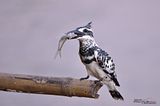So the Christmas & New Year holiday has started, I immediately went out for a bird trip! Ariake Sea is the largest inland sea located in Kyushu island. It connects 3 prefectures including Saga, Nagasaki and Kumamoto. I decided to visit the Saga part since it seems to be the easiest concerning about what Mark Brazil's book has stated. Saga is the ugliest city I've seen so far in Japan. It made Beppu feels like heaven. The city is grey and filled with strange emptiness. So many constructions were going on and that made everything worse. Anyway, it has the largest concentration of Black-billed Magpie (Pica pica) in Japan and they can be found almost everywhere.

 The city isn't even ready to be a city.
The city isn't even ready to be a city. I arrived at Saga Eki around noon, put my luggage in one of the lockers then took the No.12 bus from eki to Sumiyoshi(住吉) stop, from there it's a 3 km walk south to the shoreline. Along the way are the vast dry fields which attract many Grey Herons and egrets. There were many Black-billed Magpies along the way and 2 Common Kestrels were found being constantly harassed by the crows. In small canals there were Common Moorhens and Common Kingfishers and the Oriental Turtle-Doves and Daurian Redstarts were common.
I arrived at Saga Eki around noon, put my luggage in one of the lockers then took the No.12 bus from eki to Sumiyoshi(住吉) stop, from there it's a 3 km walk south to the shoreline. Along the way are the vast dry fields which attract many Grey Herons and egrets. There were many Black-billed Magpies along the way and 2 Common Kestrels were found being constantly harassed by the crows. In small canals there were Common Moorhens and Common Kingfishers and the Oriental Turtle-Doves and Daurian Redstarts were common. An immature Grey Heron
An immature Grey HeronI finally made it to the shore around 2pm and the sun was just right in front of me. The sea level was far too low that the majority of the birds were gathering about 1km away from where I stood. There were several ten thousands of ducks and waders which couldn't really be told which species. However, several hundreds of Common Shelduck (Tadorna tadorna) were still presenting quite close to the walkway. Ariake Sea is the only main wintering ground of this duck is Japan. But what really surprised me was the number of Saunders's Gull (Larus saundersi) which is listed as vulnerable in the Red Data Book, it was an OMG number! They were flying around all over the place, calling, chasing, harassing other small waders for food. I even thought they were the common Black-headed Gull at the first place.

 Common Shelducks like to feed around the mudflat rather than water edge.
Common Shelducks like to feed around the mudflat rather than water edge.

 Shame the light wasn't that good.
Shame the light wasn't that good.


 An immature Saunders's Gull; note the black tail tip
An immature Saunders's Gull; note the black tail tip
 They mainly fly around over the mudflat looking for crabs, sea worms or mudskippers.
They mainly fly around over the mudflat looking for crabs, sea worms or mudskippers.

 When they detect a prey, they make a turn in midair and stoop down to catch it with their beak.
When they detect a prey, they make a turn in midair and stoop down to catch it with their beak.

 Common Shelducks like to feed around the mudflat rather than water edge.
Common Shelducks like to feed around the mudflat rather than water edge.
 Shame the light wasn't that good.
Shame the light wasn't that good.

 An immature Saunders's Gull; note the black tail tip
An immature Saunders's Gull; note the black tail tip They mainly fly around over the mudflat looking for crabs, sea worms or mudskippers.
They mainly fly around over the mudflat looking for crabs, sea worms or mudskippers.
 When they detect a prey, they make a turn in midair and stoop down to catch it with their beak.
When they detect a prey, they make a turn in midair and stoop down to catch it with their beak.I walked to the western part of the mudflat and surprisingly found a super cute Japanese Weasel (Mustela itatsi) feeding along the shoreline. The color of its fur was so bright that it could be seen easily from a distance. I also spotted 7 Spoonbills sleeping on mudflat extremely far away. Along the way back I got a female Reed Bunting (Emberiza schoeniclus), many Dunlins and Grey Plovers. It was not that bad for the fist day, especially only a few hours before sunset. I really wished for higher tides and more birds closer to the walkway on the next morning. That night I stayed at Toyoko Inn which was just right in front of the Saga Eki thus very comfortable and also not expensive, 5040yen per night single room.


























No comments:
Post a Comment